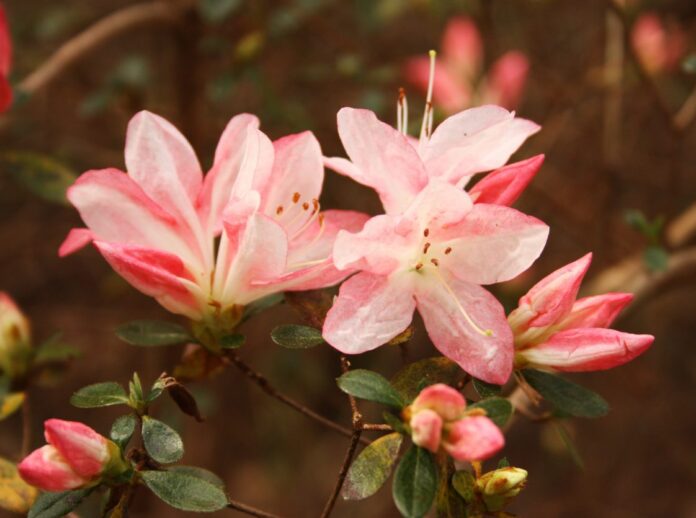AUBURN UNIVERSITY, Ala. — Springtime is showtime for azaleas in Alabama landscapes. Bursting with blooms and color, azaleas are the stars of spring. Lucy Edwards, the Alabama Cooperative Extension System’s coordinator for Chilton County, said azaleas may be the most popular flowering shrubs in Alabama.
Buying plants
For azaleas, gardeners will get the most vibrant display of flowers by buying and planting a mass of a single variety instead of using many varieties and colors. However, purchasing different azalea varieties and colors and planting them together can prolong bloom time.
When buying plants, select ones that are sturdy and have a good branch system. Avoid buying plants with weak, spindling growth. This usually means the plant has a poor root system or that plants were grown too closely together in the nursery. The best size to buy is 12 to 16 inches tall, because smaller plants are more likely to be injured by cold weather.
Azaleas are usually bought as container-grown plants. Sometimes the plant can be pot-bound, meaning the azalea may have a mass of roots growing around the outside of the ball of soil.
“Take the plant out of the container before you buy it,” Edwards said. “Make sure the roots are healthy and completely fill the pot. If you notice plants are pot-bound when you take them out of the container, massage the root ball to loosen some of the roots before planting.”
Edwards said gardeners can also pull some of the roots at the bottom of the root ball. This will help roots to spread out and grow away from the original ball of container-potting medium.
Planting azaleas
Azaleas can be planted any time of the year if people provide adequate water. Most people buy azaleas in the spring, when the plants are blooming, so they can choose the right color combinations. However, fall is probably the best time to plant, because the plants can become better established before hot weather arrives.
“Carefully consider your planting site for azaleas,” Edwards said. “Pick a place with light-to-moderate shade. Azaleas receiving some shade during the winter usually suffer less cold damage. During hot weather, the flowers last longer on plants in filtered shade. Late-blooming varieties need to be in partial shade to prevent sun scald to the flowers.”
Pine trees with moderate-filtered shade provide the ideal protection for azaleas. However, heavy shade throughout the day may reduce flower production and result in spindly growth. Evergreen trees or tall shrubs with low branches make good windbreaks and attractive backgrounds for an azalea bush. Shallow-rooted trees — such as oaks, elms and maples — may compete with azaleas for moisture and nutrients.
If necessary, create raised beds for the azaleas by adding pine bark or peat moss to improve drainage and lower pH. These beds should be 10 to 12 inches deep. This depth provides an artificial environment like a large container. Additional watering is required. Avoid building raised beds over tree roots, as it can be stressful and potentially damaging to the tree.
Consider soil conditions
Gardeners should always consider soil conditions when selecting a planting site. Azaleas require an acidic soil pH (5.5) to grow well, so you need to check the soil pH of the planned site before buying azaleas. To determine soil pH, submit a soil sample to the Auburn University Soil, Forage and Water Testing Laboratory. More information about soil testing is available on the “Submitting Samples for Soil Testing” web page at www.aces.edu.
If test results show a pH above 6.5, you can expect to spend additional money and effort to maintain the proper pH range for plant growth. Because of this, you may want to consider using other types of landscape plants for that site.
More information
“Native Azaleas for Alabama” and “Evergreen Azaleas for Alabama” are two Alabama Extension publications that contain a lot of great information on azaleas. You can find those resources at www.aces.edu. You can also contact your county Extension office to be connected to a home grounds, gardens and home pests agent in your area.
























